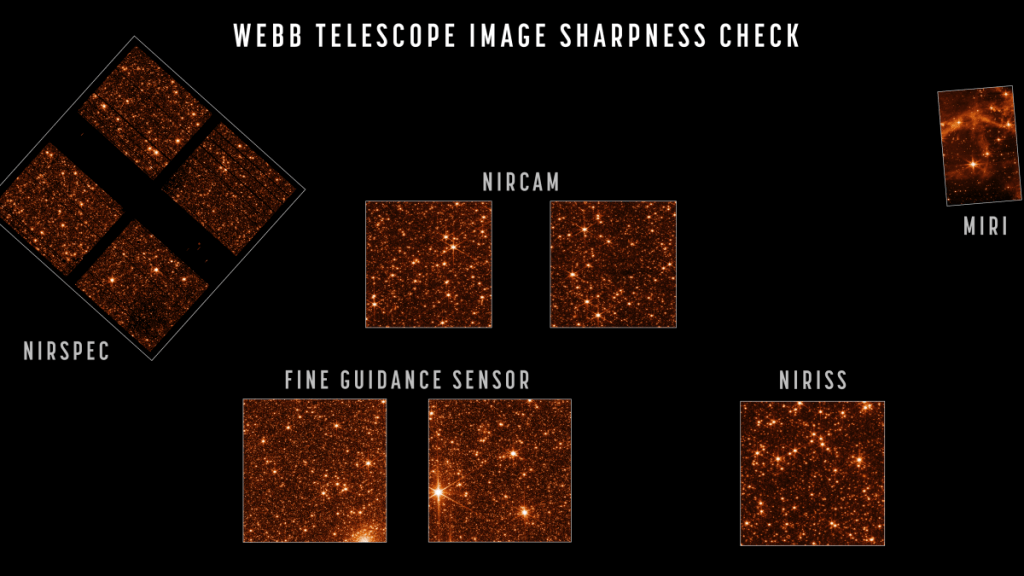NASA’s new deep-space observatory will soon move between hot and cold in a crucial test of its infrared viewing capabilities.
The James Webb Space Telescope, which just finished its alignment phase last week with sharp images of distant stars, is preparing a thermal stability test. This daring gauntlet will deliberately turn the observatory between positions where it receives more or less sunlight. The goal is to make sure the $10 billion observatory can sail through its science work despite the extremes of space and without sacrificing the quality of its images, its pointing ability or other vital abilities that will keep it focused on the early universe.
“The thermal stability exercise will measure these changes by moving between the extremes of Webb’s field of view, from the hot to the cold attitude, spending multiple days in the cold attitude, then slewing back to the hot attitude,” Erin Smith, Webb deputy observatory project scientist, said in a Saturday (April 29) agency statement.
Live updates: NASA’s James Webb Space Telescope mission
Related: How the James Webb Space Telescope works in pictures
To be sure, Webb does have a five-layer sunshield to keep it protected from the worst of solar radiation fluctuations, but the observatory still experiences some changes as the angle of the sun shifts upon the sunshade, Smith said.
Webb will start the test in a “hot attitude,” representing 0 degrees pitch. (Pitch represents the angle towards or away from the sun, between -5 and +45 degrees.) It will stay there for five days to stabilize, also allowing teams to take measurements from Earth.
Then the team will turn Webb to a colder attitude, roughly +40 degrees pitch. Here, the observatory’s near-infrared camera (NIRCam) will be tested for 24 hours to see if there are any effects on the optics, and then the telescope’s stability will be monitored for 12 hours to see how it performs with the thermal change, Smith said.
The telescope will sit in this freezer mode for about a week to allow the temperatures to further stabilize, before slewing once again to a hot attitude. For this second round in the heat, Webb will use both NIRCam and its fine guidance sensor to collect stability data.
The mid-infrared instrument will also be deployed in hot and cold attitudes “to understand how the changing thermal environment affects the mid-infrared background levels,” Smith added.
Overall, the changes should be very small, but Webb’s exquisite sensitivity to its environment will make this thermal testing important to get ready for its observational period that is scheduled to start around June.
“This real-world calibration of the complicated thermal models used by Webb’s developers will help to inform future observing strategies and proposals,” Smith concluded.
Follow Elizabeth Howell on Twitter @howellspace. Follow us on Twitter @Spacedotcom and on Facebook.

